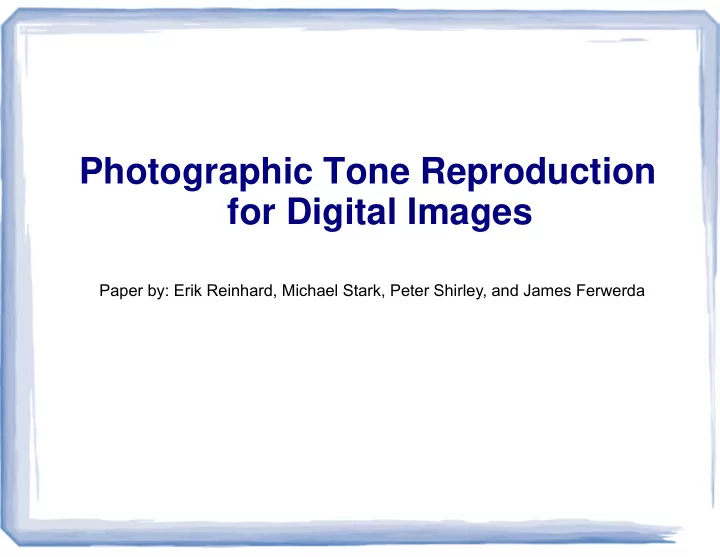

Photographic Tone Reproduction for Digital Images Paper by: Erik Reinhard, Michael Stark, Peter Shirley, and James Ferwerda
Tone Reproduction Problem How should we map measured/simulated scene luminances to display luminances and produce a satisfactory image?
Key Ideas • Zone • Dynamic range • Middle-grey • Key • Dodging-and- burning
Algorithm • Apply luminance mapping • If necessary, apply automatic dodging- and-burning
Initial Luminance Mapping or
Automatic Dodging-and-burning Seek first scale sm where:
Global vs. Local operator Global or Local
Results
Discussion Questions?
Question 1 What is problematic in the algorithm?
Question 1 What is problematic in the algorithm? Set parameters “Sharpening” Phi Scale alpha_1, alpha_2 Threshold epsilon Scale s Key value a “Magic”
Question 2 Why does equation 9 increase local contrast?
Question 3 What do we change in the algorithm to obtain images like this?
Question 3 What do we change in the algorithm to obtain images like this? Make histogram peak in high/low tone area → key value a
Question 4 Why can we obtain luminance like this? L = 0.27R + 0.67G + 0.06B
Question 4 Why can we obtain luminance like this? L = 0.27R + 0.67G + 0.06B
Question 4 Why can we obtain luminance like this? L = 0.27R + 0.67G + 0.06B → Luminosity function (see Wikipedia) → Scotopic vs. photopic vision Scotopic, sensitivity of the eye is mediated by rods
Question 5 Why is it called dodging & burning? Why does burning darken the image? Why does dodging lighten it?
Question 5 Darkroom → prints are made from negatives → negative process: more light → darker
Recommend
More recommend